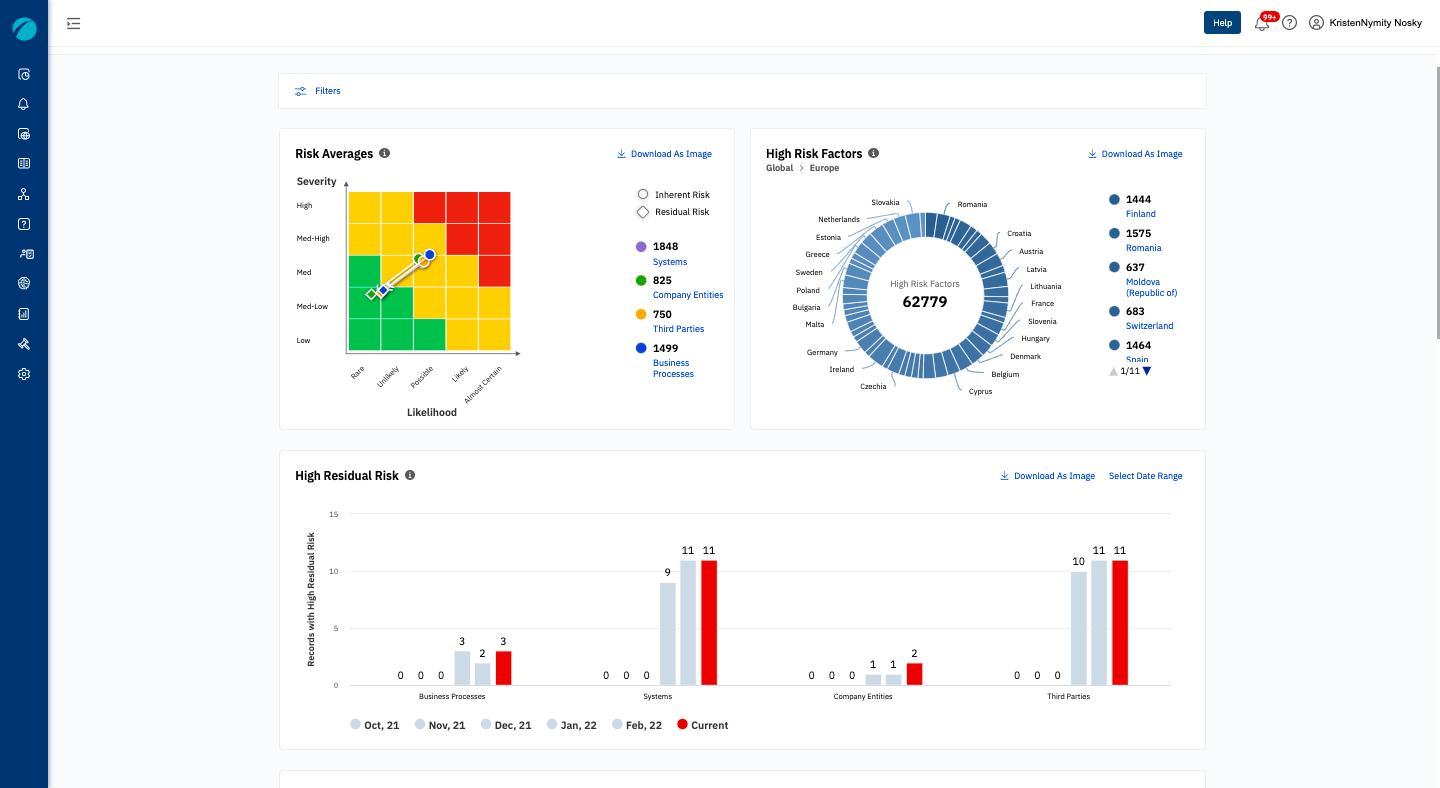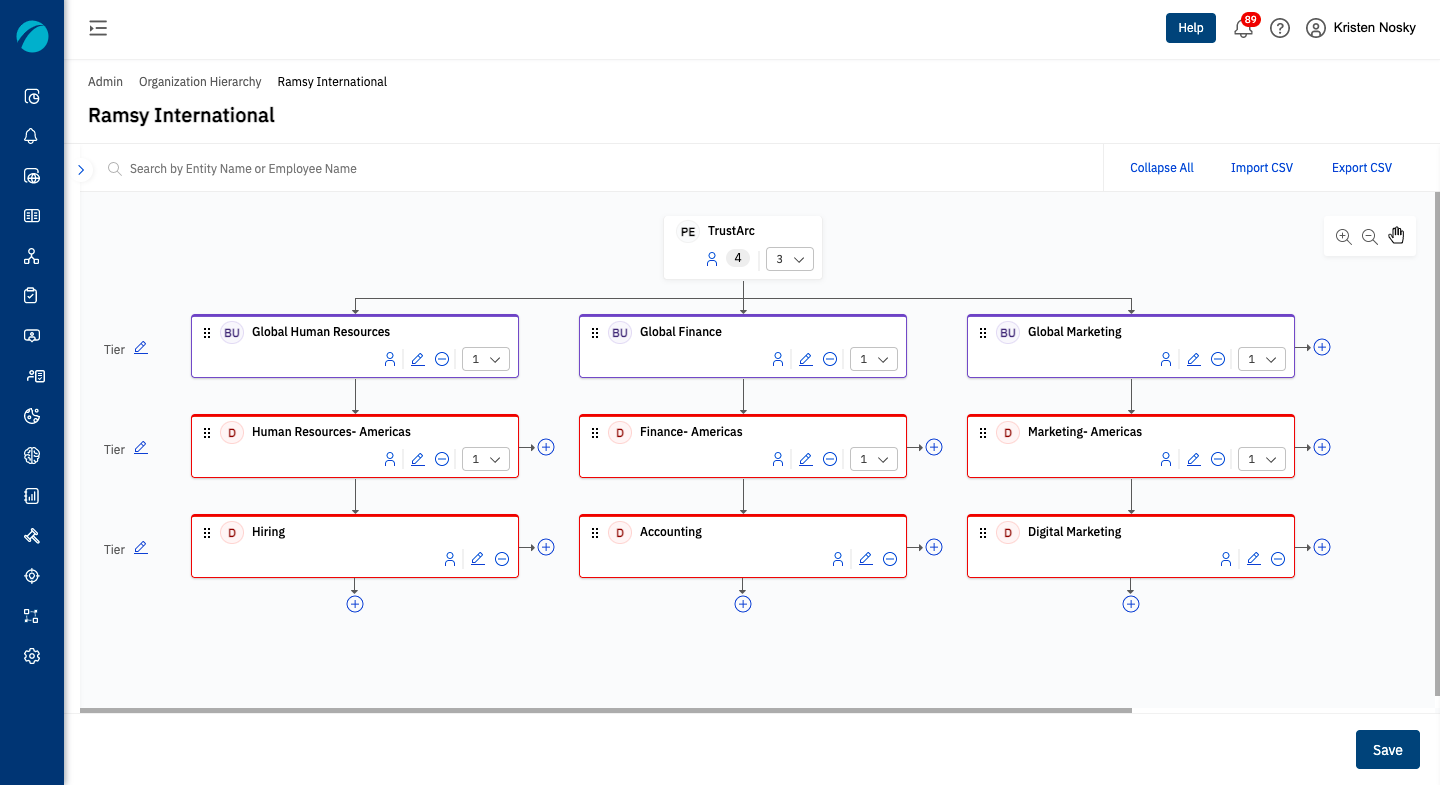Regulation Management Can’t Keep Up with Data Growth
Today every organization is acutely aware of the liability that data can be. It seems every department, function, and team in an organization uses its preferred list of external apps and vendors to satisfy its business needs.
For example, the global big data analytics market is predicted to reach over 68 billion US dollars by 2025.
On top of that, your organization is often using those third parties to collect and store information. It’s not always clear where that information resides or what risk it poses to you.
For the information you know, how do you prioritize which controls and risk mitigation practices should be established first?
Getting this wrong can:
- Make you susceptible to heavy non-compliance fines if there is a breach of data
- Make you subject to higher budget demands for avoidable external counsel requests
- Decrease trust and respect through the eyes of your customers if their data is mismanaged
The repercussions are serious but avoidable by framing data management from a business process and risk perspective.
Re-Imagined Risk Management Built With Your Organization in Mind
A risk management tool needs to assess your organization’s risk surrounding data correctly. It also needs to show how your actions and controls help reduce the risk and improve your privacy plan.
With this in mind, TrustArc has re-designed the risk management solution, Risk Profile, based on the following four tenants:
- Better Reporting
- Stronger Integration
- Simpler User Experience
- Greater Configuration
Orchestrating these four principles into Risk Profile provides you with a symphony of options to confidentially apply controls and mitigate risk to your privacy program.
Better Reporting
Complexity is the enemy when integrating a privacy program in an organization. You need a risk dashboard that clearly shows where your risk resides and indicates improvements once controls have been established.
Being able to hone in on high-risk activities in the different aspects of your business clarifies your essential action items for the month and how many high-risk records accumulate over time.
As the months go on, you want to see a decrease in the number of high-risk records. As a bonus, over time, you can use the dashboard to report to leadership how your privacy program reduces risk.
There are three critical additions to the Risk Profile that all privacy programs should have when assessing risk.

One clear view that shows all of your records and their risk
We know that a robust privacy program requires listing all of your business activities in the form of business records.
But that list of business records can get long, quickly. Assessing the risk of hundreds of records is time-consuming.
We now aggregate and list out what percentage of records are high, medium, and low risk. The high-risk elements are where you should tackle first.

Use this project management chart to see your assessment workflow
Project management is a vital part of tracking and controlling privacy risks. Ensuring that assessments and controls are completed promptly can ensure that your organization complies without penalty.
The risk management chart is an operational chart that indicates the total number of records with residual risk and tracks the total number of approved tasks that have been completed.

How do you know where each level of your organization stacks up?
Each business unit within your organization is not created equally, nor do they perform the same. Organization Hierarchy allows you to segregate your risk data based on the business level with your organization.
If an area of your business seems to have more records containing high-risk activities, this would be the best area to focus on implementing assessments and controls.

Risk Profile is Essential for Your Privacy Program
Professionals rely on data management tools that keep an inventory of numerous data records and flag where considerable data risk exposure exists.
Staying on top of regulations is good for business. To do so, you need to be able to report on the progression of your plan.
The challenge is efficiently sifting through the hundreds of data records to ensure that each record has reached compliance. Sometimes it feels like an ocean of information, and you’re about to drown.
Privacy pros should spend less time manually inputting and maintaining entries and should be spending more time actioning on high-risk initiatives, along with reporting the progression of these initiatives to the leadership team.
The design of Risk Profile is to visually show where attention is needed to develop your program, along with the ability to monitor progress and report it to leadership.
Risk Profile Provides
Dynamically generated impact assessment reports: The risk algorithm streamlines users’ selection of an appropriate DPIA or PIA.
These assessments result in dynamic reports used in executive meetings, audits, and other business reviews.
Identify high-risk business activities: Get a comprehensive view of your risk across third parties and internal processes.
Apply over 1800 rules and 130+ laws globally to calculate and immediately understand your overall risk.
See the details: Drill down into the next layer of risk factors to quickly access associated records, recommended assessments, and generated reports to help mitigate risk across your organization.
Understand your International Data Transfer Risk: Risk Profile automatically detects data flows with data transfer risk and recommends relevant data transfer compliance mechanisms to mitigate those risks and demonstrate compliance.





